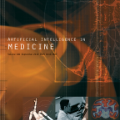Articulated objects pose a unique challenge for robotic perception and manipulation. Their increased number of degrees-of-freedom makes tasks such as localization computationally difficult, while also making the process of real-world dataset collection unscalable. With the aim of addressing these scalability issues, we propose Neural Articulated Radiance Fields (NARF22), a pipeline which uses a fully-differentiable, configuration-parameterized Neural Radiance Field (NeRF) as a means of providing high quality renderings of articulated objects. NARF22 requires no explicit knowledge of the object structure at inference time. We propose a two-stage parts-based training mechanism which allows the object rendering models to generalize well across the configuration space even if the underlying training data has as few as one configuration represented. We demonstrate the efficacy of NARF22 by training configurable renderers on a real-world articulated tool dataset collected via a Fetch mobile manipulation robot. We show the applicability of the model to gradient-based inference methods through a configuration estimation and 6 degree-of-freedom pose refinement task. The project webpage is available at: https://progress.eecs.umich.edu/projects/narf/.
翻译:电解对象对机器人感知和操控构成了独特的挑战。 其增加的自由度使本地化计算等任务变得困难,同时使真实世界的数据集收集过程无法伸缩。 为了解决这些可缩放问题,我们提议神经自成一体的辐射场(NARF22),这是一个管道,它使用一个完全差异的、配置自成一体的神经辐射场(NERRF22),作为提供高品质的表达器。 NARF22 不需要在推断时明确了解对象结构。 我们提议一个两阶段的部件化培训机制,使对象制成模型能够在配置空间全面普及。即使基本的培训数据只有一种配置。我们通过对通过较轻的移动操纵机器人收集的、可配置自成一体的、可配置自成一体的工具数据集(NERF22)进行培训,以此来显示NARF22的功效。 我们通过配置估计和6度自由度构成改进任务,显示该模型对基于梯度的推论方法的适用性。




